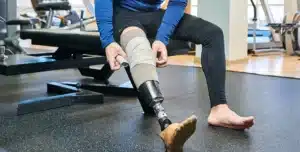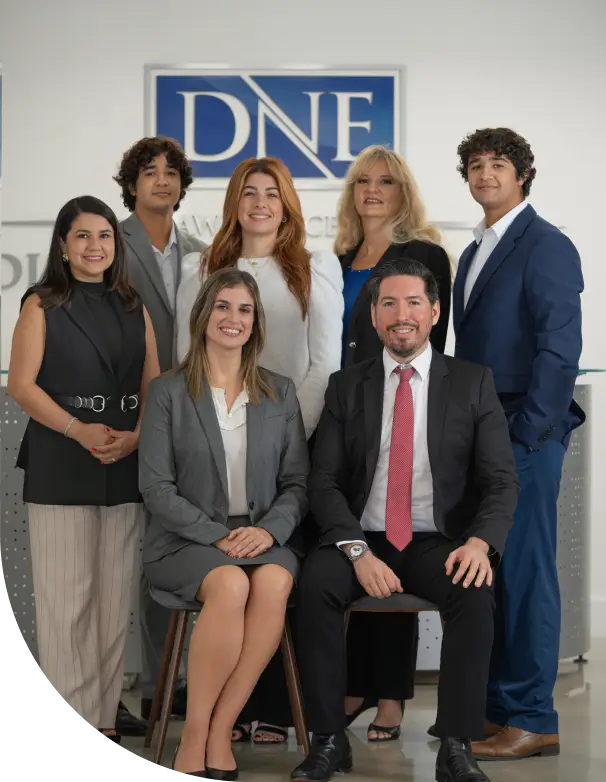
The H-1B visa offers skilled foreign professionals the chance to work in the United States.
It’s a powerful tool for employers to bring global talent into critical roles. For applicants, it opens a gateway to career growth and long-term opportunity. However, navigating the H-1B visa requirements means understanding a maze of rules, documentation, and deadlines that can easily derail your plans if mishandled.
If you’re unsure about the next steps, you’re not alone—and you’re not without support. The Law Office of Diaz & Nunez Elorza is here to guide you with the insight and care you need.
In this blog, you will learn:
- Who qualifies for H-1B status, and what counts as a specialty occupation
- What responsibilities do employers have before filing an application
- How the cap, lottery, and processing timelines affect your case
Let’s begin with the basics.
What is the H-1B Visa?
The H-1B visa is a type of visa for people who want to work in the United States for a set amount of time. It helps U.S. businesses bring in foreign workers for jobs that require special skills or knowledge. Most of the time, you need a certain level of education or work experience in computer programming, business, or engineering.
To get this visa, businesses must go through immigration services and apply for the people they want to hire. The jobs offered must fit into a specific visa category as specialty occupations. This means the work must be hard enough that only qualified people can do it.
There is an annual cap on how many people can get this visa every year. If more people apply than there are spots, there is a lottery to pick who gets to try. Another big thing about the H-1B visa is its dual intent. This means people with this visa can also try to get permanent residency in the U.S. later.
Key Features of the H-1B Visa Program
The H-1B visa program stands out from most nonimmigrant visa types because it has unique features.
- Its period of stay lets a person work in the U.S. for up to three years at first. After that, you can extend it, but only for a total of six years.
- The dual intent rule is one of the best things about the H-1B. This means that when you are on the H-1B visa, you can also try to get a green card for permanent residency. You do not have to worry about losing your nonimmigrant status while doing this.
- People in many jobs can use the H-1B. You may be a computer programmer, a business analyst, or a fashion model. The H-1B allows people in these different fields to come and work.
- Still, every application must follow special rules and standards to meet the government’s requirements. Because of the flexible options, a good period of stay, and the dual intent policy, many skilled people worldwide pick the H-1B visa first.
Benefits for Employers and Applicants
The H-1B visa has many benefits for both companies and workers.
For businesses in the U.S., it helps them hire skilled foreign workers for jobs that require special knowledge. This means they can fill essential spots with the right people. People with this work authorization have a chance to gain great experience in their field. They may also use this visa as a step toward permanent residency.
Other good things about the H-1B visa are:
- Companies can attract and retain people from all over the world, which helps them perform better than other businesses.
- Skilled workers can get top jobs in well-known companies.
- Families of people with an H-1B visa can get education and jobs through the H-4 visa.
The H-1B visa is good for companies and foreign workers looking for new opportunities in the U.S.
Eligibility Criteria for H-1B Applicants
Moving through the eligibility requirements is essential when applying for the H-1B visa.
To qualify for this visa, you must have a bachelor’s degree in a related field or work experience equal to it. Much focus is placed on what the applicant knows from school and what skills the person can show from past jobs.
The employer also has a big task. They have to make sure their candidate meets every part of the rules for work in the offered specialty occupation. These rules can be strict, so people who want this visa need to clearly show their qualifications.
Doing this helps them get the much-wanted work visa.
Educational Requirements
You must show the right educational background to meet the tough H-1B rules. You need a bachelor’s degree or something higher in the field that matches the job.
If your degree is from another country, you may need an equivalency check to show it meets U.S. standards. If the job asks for deep knowledge, having a higher degree, like a master’s or Ph.D., helps you get ahead. These higher degrees should match the specialty occupation you apply for.
Besides a college degree, other training or certifications can help your case. For example, if you have strong computer programming or business analytics skills, you may be a better fit for certain specialty occupations.
Your educational background is one of the first things employers and reviewers look at, so ensure it matches the job’s requirements.
Specialty Occupation Definition
Specialty occupations are a big part of the H-1B eligibility requirements.
For this visa, the jobs require high skills and knowledge. People in these roles must have had academic training or something equivalent.
Some of the main fields for specialty occupations are computer programming, engineering, and finance. With good documents, the employer has to show why the work requires deep thinking and special skills. For example, a business analyst must know how to break down company plans or guess market trends.
U.S. Citizenship and Immigration Services (USCIS) sets strict standards for what counts as a specialty occupation. The job must be complex or different enough that the employer needs someone with a special degree or the same training.
When they show why a position needs this skill level, employers help boost the chances of a strong visa application through immigration services.
Professional Experience Considerations
Work experience is significant for meeting H-1B eligibility requirements.
If you have worked in your field, you can show the practical application of a theoretical body of knowledge, which helps prove your skills.
For instance, if you are a computer programmer, your work with coding languages such as Python or Java can show that you can use these skills to solve business problems. In the same way, if you do research at a nonprofit, you often need strong analytical skills from your work experience.
Employers look at documented achievements, like past job roles, certificates, or work from your portfolio that shows what you have done in the industry. If your degree does not match the job exactly, having the right work experience can help you meet eligibility requirements and strengthen your application.
Ultimately, your professional skills play a key role when you apply.
Employer Responsibilities and Eligibility
Under the H-1B program, employers must follow the rules and check who is eligible to apply. They must file a Labor Condition Application (LCA) with the Department of Labor, which shows that they pay the right wages and provide good working conditions.
In addition, for the person to get approved, there must be a genuine job offer in a specialty occupation. Employers also have to show proof of an employer-employee relationship. This means the company should have control over what the worker does.
All these steps help build a strong H-1B application. They tie what the employer has to do to the chance that their new worker will be allowed to come and work.
Labor Condition Application (LCA) Requirement
Every employer needs a labor condition application (LCA) when they want to hire someone with an H-1B visa. The LCA helps ensure the company follows the rules about pay and work set by the Department of Labor.
The employer must promise in the LCA that they will pay at least the prevailing wage for the job. This wage can sometimes be more than paid to others who do the same work. The employer must submit this paper online and provide details about the job location and work conditions. This is done to prevent foreign workers from being used unfairly.
The employer must also keep records and promise not to take jobs away from people already working in the U.S. while the job is filled.
Valid Job Offer in a Specialty Occupation
For the H-1B petition to go through, the employer must give a valid job offer linked to a specialty occupation. This offer helps employ qualified individuals in jobs requiring advanced knowledge and skills.
The job that is offered has to be hard enough that it makes sense to hire someone with a degree or special training. These jobs are often found in tech fields, like software engineering, or specific roles in medical research. Proving this point is a big part of what the USCIS will look for during their petition review.
Employers also need to list the person’s duties and show what skills are required to complete the work. They should clarify that there will be an employer-employee relationship, with the employer checking or guiding the worker’s job.
Showing that the job offer truly matches the specialty occupation helps clarify that the person fits under the strict visa rules.
Wage and Working Conditions Compliance
Compliance with wage and working conditions is essential for H-1B employers. They must show that they pay at least the actual wage and more than the minimum wage. This is the way to get labor certification approved.
The Department of Labor checks wage determinations based on location to ensure the H-1B worker’s pay is right for the area and job. Employers must keep standards high so U.S. workers do not get hurt and fair competition stays in place.
Employers must also keep clear records of workplace conditions. This includes conditions that affect workers who are not on the payroll. Good records help to avoid trouble during site checks or audits.
If the employer follows the rules, it shows they are honest. This allows the employer’s petition during the whole application process.
When we move to the next part, it’s good to know that the application process is critical to both the people applying and the employers.
The H-1B Application Process
It is essential to know the steps in the H-1B application process for employers and people who want this visa.
To start, the employer needs to send a Labor Condition Application (LCA) to the Department of Labor. This step ensures the pay meets the prevailing wage set by the government. After getting the LCA approved, the employer must fill out Form I-129. This form, given to the United States Citizenship and Immigration Services, provides the facts about the job and the person who will work in the United States.
The applicant should also share papers that show their education and work experience fit the needs of the specialty occupation. It is very important to follow all application procedures. Doing so helps the employer and employee have a better chance of getting the visa approved.
Employer Registration and Lottery System
To be part of the H-1B visa application process, employers must go through the electronic registration process first. During the registration period, they have to send their applications online.
Only cap-subject petitions are taken in at this time. If more people apply than the annual cap set by the Department of Homeland Security, then a lottery is used. The lottery system helps give everyone a fair chance. Employers who get picked in the lottery can complete the full visa application process.
Knowing each step is essential for those who want to get H-1B visas for foreign workers.
Submitting Form I-129
Submitting Form I-129 is a key step in the H-1B visa application process. This nonimmigrant visa application is for foreign workers. You must give detailed information about the prospective employer and the job offer. You also must include the applicant’s work experience and education in a specialty occupation.
The Department of Labor wants proof of wage determination, too. This shows you meet the rules about the prevailing wage. There can be delays if you give the wrong details or leave something out. Your visa application process may even end in denial.
That’s why it is essential to prepare all information with care.
Supporting Documentation Checklist
It is very important to send in all needed documents. This helps the H-1B visa application move faster.
- One key document you need is proof of the job offer from your prospective employer. This is usually an employment letter. The letter should have the job title, what you will do, and how much you will be paid.
- You must also include a valid labor condition application (LCA) showing that the wage for the job meets the prevailing wage.
- You will also need to show your educational qualifications. You can do this with copies of your degrees and school records. These documents help prove that the job is a specialty occupation and that you are qualified for it.
Experience letters that show your work history may also make your application stronger.
Understanding the H-1B Cap and Exemptions
The H-1B visa program sets an annual cap. This means there is a limit on how many visas are given to foreign workers each year who want jobs in special fields.
The annual cap can affect how people apply and whether they are eligible. Some organizations do not have to follow this cap. For example, higher education institutions and nonprofit research organizations can hire foreign workers even after reaching the cap.
It is essential for the people who apply and hire to know about these rules. This helps them follow the right steps in the application process and stay in line with the Department of Labor rules.
Annual H-1B Visa Cap Explained
Knowing the limits of the H-1B visa program is very important for both job seekers and employers who want to hire them.
Every fiscal year, there is an annual cap on the number of H-1B visas you can get. There are 65,000 spots for normal applications. There will also be an extra 20,000 spots for people with at least a master’s degree from a school in the U.S. This annual cap means many foreign workers must compete for these spots.
Because of this, some may look for other types of visas. Knowing this annual cap helps bosses and workers with their plans. It helps most of them understand what they can do for hiring.
Both sides must follow the Immigration Act when planning and applying so they do not get into trouble. This can lead to a better hiring process and help everyone stay on track.
Cap-Exempt Employers and Occupations
Cap-exempt employers play an essential part in the H-1B visa process. They help some groups avoid the rules of the annual cap.
Some are higher education institutions, nonprofit research organizations, and government entities. These places can hire foreign workers for special jobs without worrying about the yearly limit. This can also include nonprofit groups that are linked to those main groups. Because of this, people have more chances to obtain higher degrees.
If you want a job here, you should get to know the eligibility requirements. Following the Department of Labor and Department of Homeland Security rules is essential.
Impact of the Lottery on Applicants
A lottery system manages the yearly limit, or annual cap, of H-1B visa spots.
For many people who apply, this process is key in getting a job in a specialty occupation.
The random draw means not everyone will get picked, making it hard for even strong foreign workers to feel sure about their chances. Things like the prevailing wage level and what each employer needs can also make the process tricky.
To be ready, they must know what the lottery could mean for their visa. This helps everyone understand what to expect in a tough immigration system and prepare for what might happen next.
Timeline and Processing of H-1B Petitions
The H-1B application process happens within a set timeline that employers and foreign workers need to know. Each fiscal year, the time to submit your application starts in April. There is only a small amount of time to get it done. If you use premium processing, immigration services can reply in as little as 15 calendar days. This is much faster.
If an application has missing information or if the U.S. Citizenship and Immigration Services (USCIS) asks for more documents, there can be delays. This is why you should ensure all documents are ready before you start. Careful planning is key to getting approval quickly and beginning your new employment on time.
Regular vs. Premium Processing Options
The two main ways to process an H-1B visa are regular or premium.
- With regular processing, the United States Citizenship and Immigration Services can take a few months to review the application. This means you may have to wait a while for a decision.
- On the other hand, if you pay more for premium processing, you will get a response within 15 days. This service is much faster, but keep in mind, it does not change any of the critical eligibility requirements set by the Department of Labor.
The rules for the visa stay the same, no matter which option you use. When choosing, employers and those applying should consider what is most important. You should consider how much time you have, how soon you need results, and the costs for each approach with immigration services in the United States.
Typical Approval Timeline
Approval times for H-1B visa petitions can vary greatly.
One significant factor is the processing option you use—regular or premium. Regular processing usually takes about three to six months. If you choose premium, the review will be much faster, around 15 calendar days.
The application process can be delayed. Sometimes, the government sends requests for evidence (RFEs). This can happen if job descriptions are unclear or it is hard to check someone’s qualifications.
To avoid these problems, make sure you are informed and send in the correct paperwork. This will help you get through the application process without too many delays.
Factors Affecting Processing Delays
Many things can slow down the H-1B visa application process.
The Department of Labor and the United States Citizenship and Immigration Services might face problems if your documents are incomplete. The application process can also slow down if the annual cap changes or if there is a lot of checking during busy times.
Visits or audits from the Office of Foreign Labor Certification might also take more time, which can affect the work plans of nonimmigrant workers.
That is why both applicants and employers need to be aware of these factors. Being aware helps everyone work for timely approval in the visa application process.
Maintaining H-1B Status in Florida
Staying in line with H-1B rules is very important for foreign workers in Florida if they want to keep their visas.
You should report any changes in your job or address to the United States Citizenship and Immigration Services (USCIS) right away. This ensures that US immigration services always have your latest details.
Employers also need to follow the rules of the Labor Condition Application. If they do not, there can be penalties. It is essential to know how long the visa is valid for. You and your prospective employer should also check options to extend your stay before your validity period ends. This will help you both avoid problems with status.
Check your job conditions often. Doing so helps foreign workers and those who want to hire them in the United States stay safe and meet all requirements.
Reporting Changes in Employment or Address
Keeping good records is very important for H-1B visa holders.
If you have any changes in your job, like your job title, work location, or employer, you need to tell United States Citizenship and Immigration Services (USCIS) as soon as possible.
If you do not report this, you can face problems following the rules, and your visa could be at risk. You also have to tell them if you change your home address. You should do this in ten days to keep your status in the United States.
When you report on time, you meet your legal duty and help move your immigration application process forward. This also helps protect foreign workers’ rights and ensures your employment authorization stays valid with immigration services.
Period of Stay and Extensions
An H-1B visa lets nonimmigrant workers stay in the United States for up to three years at first, based on the terms of their job. This time can be extended in many cases, with most people being allowed to stay for up to six years, unless there are special situations like a green card application still waiting for approval.
To keep this visa, companies must check that they follow the prevailing wage rules. If there is any change in job status or if workers get a new employer, this must be reported to the Department of Homeland Security.
All these steps help nonimmigrant workers keep their lawful status in the United States during the visa’s validity period.
Travel and Re-entry Considerations
Traveling outside the United States when you have an H-1B visa means you need to plan.
Follow the Department of Homeland Security rules. When you return to the United States, you must show you have the right documents. This includes a valid visa stamp and your Form I-797 approval notice. You should also ensure your passport does not expire soon, as it can make coming back harder.
Before you travel internationally, you should talk to an immigration attorney or expert. This can help you keep your work authorization and your job safe during your stay.
Dependents and Family Members
Moving to the United States with an H-1B visa affects more than just the person who gets the visa. It also impacts their dependents and family.
The spouse and unmarried children under 21 can get an H-4 visa. This lets them live in the United States during the H-1B holder’s stay. Sometimes, people with an H-4 visa can also get work authorization, allowing them to work and help the family.
In Florida, H-4 dependents can use education and healthcare services. This helps families feel more secure as they start their new lives.
H-4 Visa for Spouses and Children
The H-4 visa lets the wife, husband, and unmarried children under 21 of H-1B visa holders live in the United States.
People who get this visa can ask for work authorization, but there are some rules to follow. This helps them work and add to the country’s economy while they are in the United States. Also, they can often go to school and learn new things, which helps them be part of life in the U.S.
If families know what this visa can and cannot do, they can make the most of its benefits and be ready for each step.
Work Authorization for H-4 Dependents
H-4 dependents in the United States can get work authorization, but only under certain Department of Homeland Security rules.
To be able to work, the main H-1B visa holder must start the process for permanent residency. The application process for this involves filling out Form I-765. This form lets family members work legally in the US. They must follow the Immigration Act rules.
This work authorization helps families by giving them a better chance for money and making it easier for them to join the workforce.
Education and Healthcare Access in Florida
Access to education and healthcare is very important for families of H-1B visa holders in Florida.
Their children can go to public schools, so they get the education they need for their age and growth. In Florida, there are many types of schools, from grade schools to colleges, so families can pick the right one.
Families can also access health services through state programs, which help provide medical care for all family members. People with H-4 visas can also study in schools and get health insurance. This helps improve life for everyone who comes to the United States as an H-1B worker.
Common Challenges and Compliance Issues
Handling the H-1B visa system can be tough for employers and foreign workers.
One main problem is surprise site visits and checks by USCIS. They want to ensure that their labor certification and pay rules are followed. If work changes or a worker is let go, it can be hard to understand how much time nonimmigrant workers have before they must leave or fix their status.
Everyone must know about anti-fraud actions and what can happen if the truth is not told during the application process. This makes the rules that employers and foreign workers must follow even harder. Both groups need to keep up with these demands throughout the process.
Site Visits and USCIS Audits
Regular site visits and USCIS audits are key steps in the H-1B visa process.
These checks help ensure that all labor rules are followed and that the jobs of nonimmigrant workers are protected. The Department of Labor says companies must pay the prevailing wage for H-1B workers. If they do not, there can be substantial penalties.
During an audit, USCIS may examine things like the actual wage and the work conditions of the employees. Companies must keep clear records to show they follow these immigration rules.
Doing this shows their promise to stay within the law when they hire workers.
Termination of Employment and Grace Periods
H-1B visa holders have up to 60 days to act when employment ends.
During this time, they can look for new employment or prepare to leave the United States. Foreign workers must inform the Department of Labor and the immigration services about this change. Some people may need to file a change of status application, depending on what is happening with them.
Knowing what to do after losing a job helps you follow the rules. It also enables you to understand your options for work authorization and what to do next in the United States.
Avoiding H-1B Visa Fraud and Misrepresentation
Being watchful about H-1B visa fraud and wrong information is vital for employers and foreign workers.
The Department of Labor in the United States wants everyone to follow strict rules, so the system is not misused. You should ensure all of your details, like your work history, pay rate, and job description, match what is needed.
Employers need to check that their job offers are real and that every offer is honest. This way, the employer and worker can help keep the immigration system fair and protect their future in the United States.
Final Thoughts
Navigating H-1B visa requirements can feel overwhelming, but with the proper guidance, it becomes a path toward opportunity and growth. Whether you’re an employer hoping to secure international talent or a skilled worker aiming to build your future in the United States, understanding the visa process is key.
From specialty occupation standards to employer responsibilities and annual cap challenges, each step must be carefully handled to avoid delays or denials. Staying informed, organized, and compliant with immigration rules can make all the difference in a successful application.
If you’re unsure where to start or need help making sense of the details, the Law Office of Diaz & Nunez Elorza is here to support you every step of the way. Our team provides thoughtful legal guidance tailored to your specific immigration goals.
Call us today at 305-831-3002 or fill out our online form to schedule a consultation and take the first step toward securing your future.
Frequently Asked Questions
Can H-1B visa holders apply for a green card in Florida?
Yes, H-1B visa holders living in Florida can apply for a green card through employment-based immigration. This process typically begins with employer sponsorship, which involves filing a PERM labor certification and Form I-140, Immigrant Petition for Alien Worker, with U.S. Citizenship and Immigration Services (USCIS).
What are the most common reasons for H-1B denial?
H-1B visa applications are commonly denied due to incomplete documentation, failure to demonstrate that the role qualifies as a specialty occupation, or issues with the sponsoring employer’s legitimacy. Other common reasons include offering a wage below the prevailing wage on the Labor Condition Application (LCA), inconsistencies in submitted documents, or misrepresentation.
How long can an H-1B visa holder stay in the U.S.?
An H-1B visa holder can remain in the U.S. for an initial period of three years, with the possibility of a three-year extension, allowing a maximum stay of six years. In some instances, additional extensions may be available under the American Competitiveness in the Twenty-First Century Act (AC21) if the green card process has begun. More details are available on the USCIS H-1B visa page.
Are there special requirements for employers based in Florida?
While H-1B rules are governed at the federal level, Florida employers must comply with both federal immigration laws and any applicable state labor regulations. Employers must file an approved LCA through the U.S. Department of Labor (DOL) and submit Form I-129 to USCIS. To comply with H-1 B employment standards, employers must maintain wage records and meet public access requirements.
Can dependents of H-1B holders work or study in Florida?
Yes, dependents of H-1B holders—classified as H-4 visa holders—can live and study in Florida. However, only certain H-4 spouses may apply for work authorization by submitting Form I-765 to USCIS if the H-1B principal has an approved I-140 petition or is in a period of authorized stay beyond the six-year limit based on green card processing.










